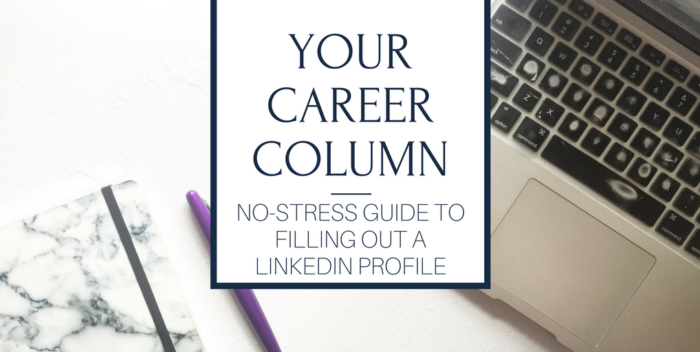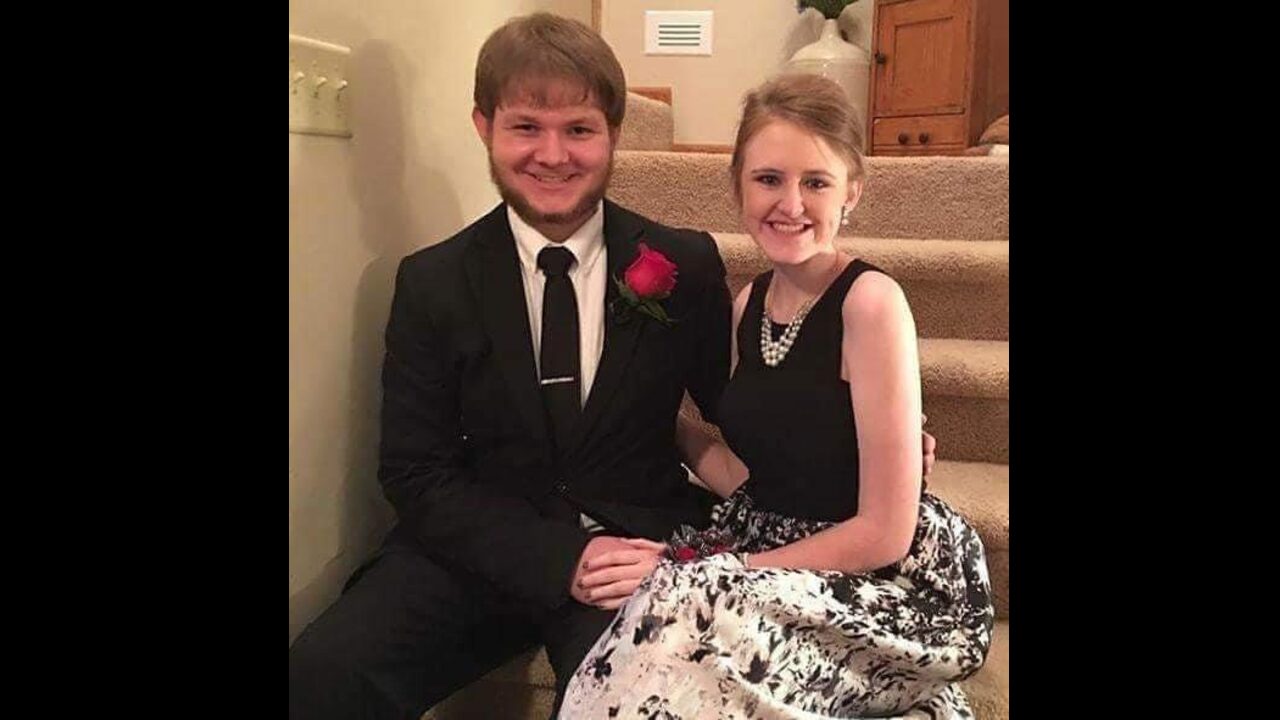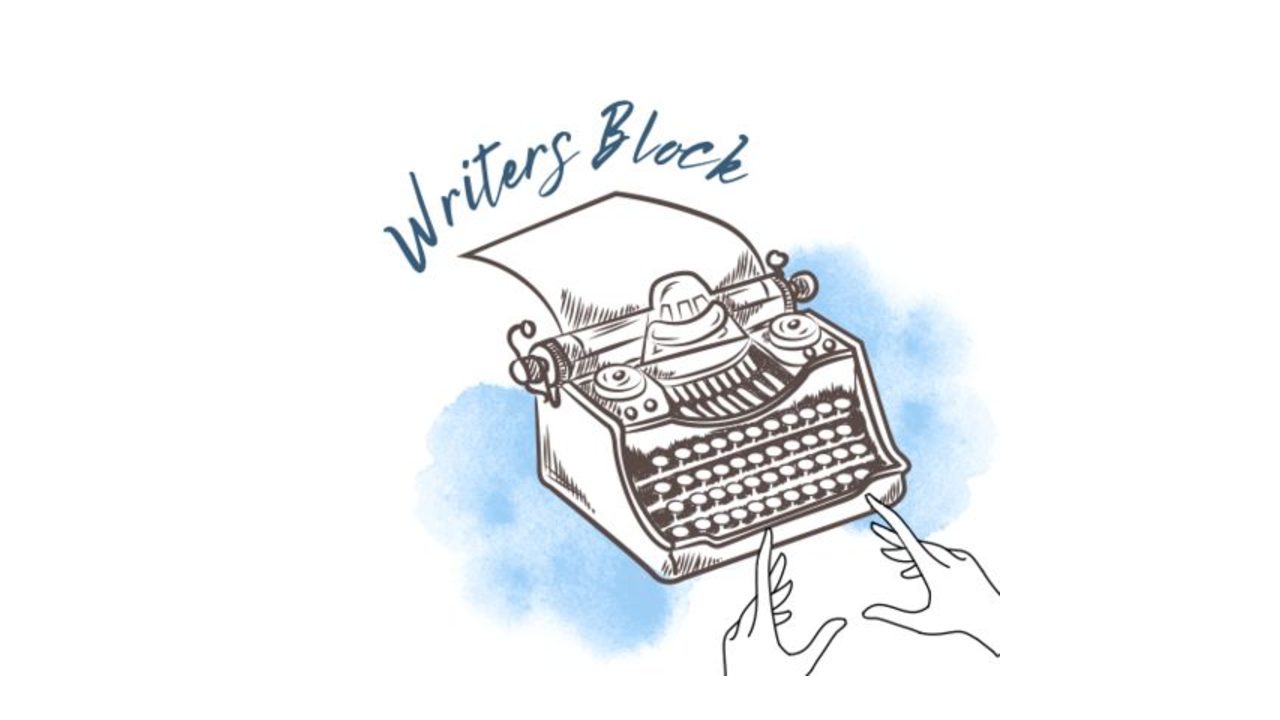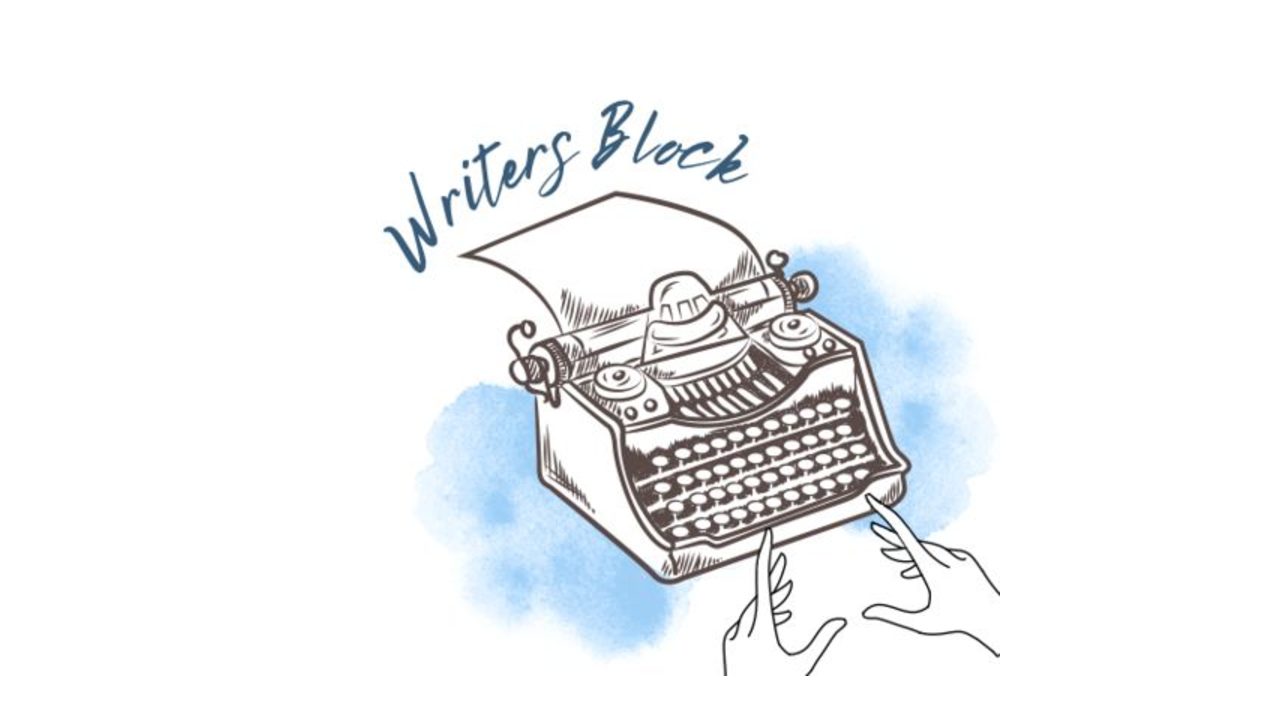Your Career Column: No-Stress Guide to Filling Out a LinkedIn Profile
by Carolina VonKampen
LinkedIn can be intimidating. It’s one thing to throw a Twitter or Instagram profile together; it’s quite different to create what is essentially an online resume. The pressure of putting together a perfect profile seems daunting, but I promise it’s not hard.
The benefits of filling out your LinkedIn profile definitely outweigh the nervousness you’ll feel by taking a tangible step toward your career. Filling out a LinkedIn profile makes it easier to create your resume, research jobs to apply for, connect with people in your field and attract the attention of employers looking for the perfect candidate.
Block off half an hour to an hour to sit down with your computer and follow these steps to create your LinkedIn profile. And remember, if you get stuck on something, just Google it and you’ll find plenty of professional advice on crafting LinkedIn profiles.
- Sign up.
I think you can all handle this: Go to https://www.linkedin.com/, enter your information and voila! Account made. You’ll be prompted to choose what your main reason for creating an account is. There’s no wrong answer, so choose whichever you feel is most important.
- Add a photo.
Don’t just use any old photo on your LinkedIn. You don’t need an official headshot, but pick a photo that shows your face and neck, has decent lighting, and doesn’t have a busy background. If you don’t have any existing photos like this, take one. Wear a nice shirt, make sure your hair looks clean and smile. It can totally be a selfie as long as it doesn’t *look* like a selfie.
- Fill out your basic info.
Click on “View Profile.” Click on the pen icon next to your name—this allows you to edit your basic information, including:
- Headline: If you have an on-campus job or an internship that relates to your career, include that information here. For example, if you work for the university’s marketing department, write “Marketing Assistant” (no need to reinvent the wheel here). If you don’t have a job or your current job isn’t related to your career goals, describe what you’re studying or the type of job you’d like to have.
- Current position and education: Once you fill out these sections of your profile, that information will show up here, so skip this for now.
- Summary: This is the place to write about who you are and what you love doing. Personally, I’m a fan of shorter summaries, especially for college students or recent graduates without a ton of experience. For example, you might write, “I’m an English student looking for opportunities in publishing after I graduate in May 2018.” Or, “My passion is to help people understand their bodies and take control of their diets.” Keep it short and relevant to your career goals.
- Fill out your experience.
This is the part that can take a while, depending on how many jobs or internships you’ve had, but it’s worth the time investment because you can use this information when you create your resume later.
Add a separate “experience” for each job, internship or position that’s relevant to the career you want. For example: Add an experience about your service learning project where you helped a local business transfer its accounting records to Excel spreadsheets, but don’t add an experience about your high school job at a movie theater (unless it’s relevant to your future career).
For each experience, specify the start and end dates as well as the employer and location. Also take a few minutes to summarize what you did at the job and whether you had any special accomplishments or projects you worked on.
- Add in the extras.
You don’t have to go overboard on these sections, but filling them out signals that you know what you’re doing and that you’re taking this professional career thing seriously.
- Languages: If you know or have studied other languages, list them here.
- Skills: You can add as many skills as you’d like. Keep them relevant to your career field and the jobs you’d like to have; it’s awesome that you can juggle, but your future employer probably doesn’t care unless you want to be a clown.
- Education: List your university, when you’ll graduate and what you’re studying. If you studied abroad, list the international university you studied at. Don’t list your high school unless it’s a prestigious one with an extensive network of alumni who could help you find a job.
- Volunteer: Have you volunteered in the past few years? Briefly describe the experience and list it on your profile. Whether it’s helping with your church’s Lenten soup suppers or reading to elementary kids, employers will be happy to know you give back.
- Connect with people.
If you’ve had a career-related job or internship, chances are your boss and co-workers are on LinkedIn. Find them and connect with them! For good LinkedIn karma, write them recommendations or endorse them for skills they’ve listed on their profiles. Hopefully, they’ll return the favor. Or just ask them to endorse you for skills and/or write you a recommendation, if you’re so bold.
I wouldn’t recommend adding casual acquaintances or random classmates, though. LinkedIn is a professional network, so treat it as such.
- Research jobs in your career field.
You may have a clear idea of what job you want after college, but it’s okay if you don’t. You can use LinkedIn to explore career options or companies you’d like to work for.
If you have favorite companies or brands, like a favorite magazine or game developer, search for them on LinkedIn. Look at the people who work for the company. Do any of their job titles sound like something you’d be interested in? Click on their profiles to read their full job descriptions and see what skills and experience it took for them to land the job.
Or if you know what industry you’d like to work in, search for jobs in that industry. Want to work in advertising but don’t know what you want to do? Look at various job descriptions and make note of which jobs interest you as well as what skills and experience you’ll need to get hired. Likewise, if you have an idea of what job you want to do but don’t have a particular industry in mind, explore various industries.
- Save job searches.
Once you’ve figured out the types of positions you want, search for these positions in the city you’re going to live in or the cities you could see yourself moving to. You can get email alerts when new jobs similar to your searches are posted—this is a great way to stay on top of the job search without a crazy amount of effort.
- Open your profile to recruiters.
This is one of the most important steps to get the maximum use out of your Linkedin profile. If you open your profile to recruiters, you might be lucky enough to be offered an interview without actively searching for jobs. (But don’t count on it.) This LinkedIn video shows you how to open up your profile—it’s quick and painless.
So you’ve completed your profile, done a bit of research into potential jobs, maybe networked a bit, and opened your profile to recruiters. That’s it, right?
Well, not exactly. You want to keep your LinkedIn up-to-date and relevant. Update your profile as you learn new skills, complete an internship or start a new job. Keep doing research and connect with people in your career field. Just remember that it takes a bit of effort on your end to see results—but the results will be worth it.
Carolina VonKampen is a former managing editor of The Sower. She now works as an editor and writes about books and career-related things on her blog. If you’d like to ask her a question about career advice, please contact her here or send her a message on Twitter.










